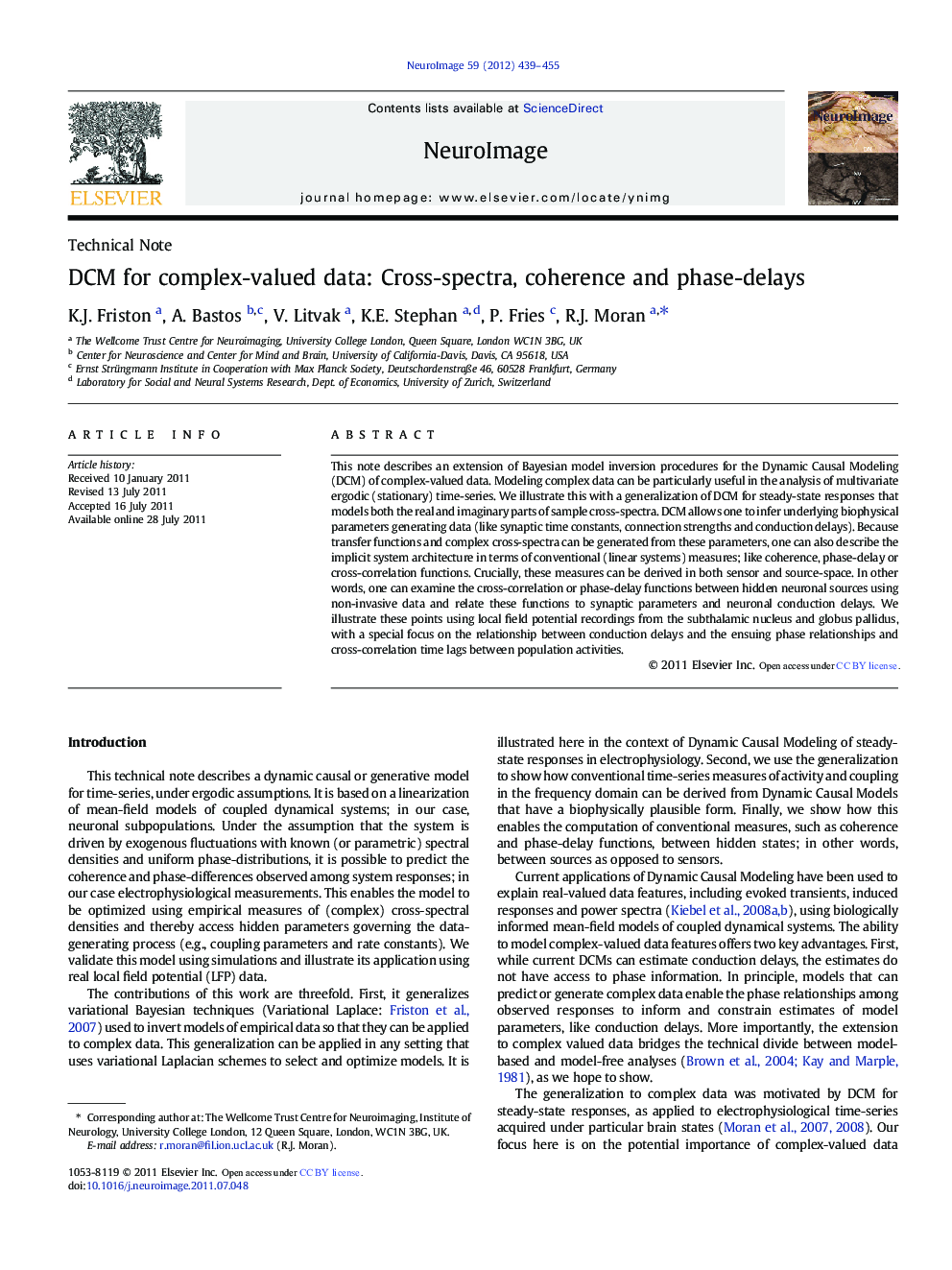| کد مقاله | کد نشریه | سال انتشار | مقاله انگلیسی | نسخه تمام متن |
|---|---|---|---|---|
| 6033090 | 1188746 | 2012 | 17 صفحه PDF | دانلود رایگان |

This note describes an extension of Bayesian model inversion procedures for the Dynamic Causal Modeling (DCM) of complex-valued data. Modeling complex data can be particularly useful in the analysis of multivariate ergodic (stationary) time-series. We illustrate this with a generalization of DCM for steady-state responses that models both the real and imaginary parts of sample cross-spectra. DCM allows one to infer underlying biophysical parameters generating data (like synaptic time constants, connection strengths and conduction delays). Because transfer functions and complex cross-spectra can be generated from these parameters, one can also describe the implicit system architecture in terms of conventional (linear systems) measures; like coherence, phase-delay or cross-correlation functions. Crucially, these measures can be derived in both sensor and source-space. In other words, one can examine the cross-correlation or phase-delay functions between hidden neuronal sources using non-invasive data and relate these functions to synaptic parameters and neuronal conduction delays. We illustrate these points using local field potential recordings from the subthalamic nucleus and globus pallidus, with a special focus on the relationship between conduction delays and the ensuing phase relationships and cross-correlation time lags between population activities.
⺠We use DCM to predict coherence and phase-differences in time-series recordings. ⺠We generalize variational Bayesian techniques for application to complex data. ⺠Conventional time-series measures are imbued with plausible biophysical form. ⺠We highlight differences in source and sensor level descriptors.
Journal: NeuroImage - Volume 59, Issue 1, 2 January 2012, Pages 439-455